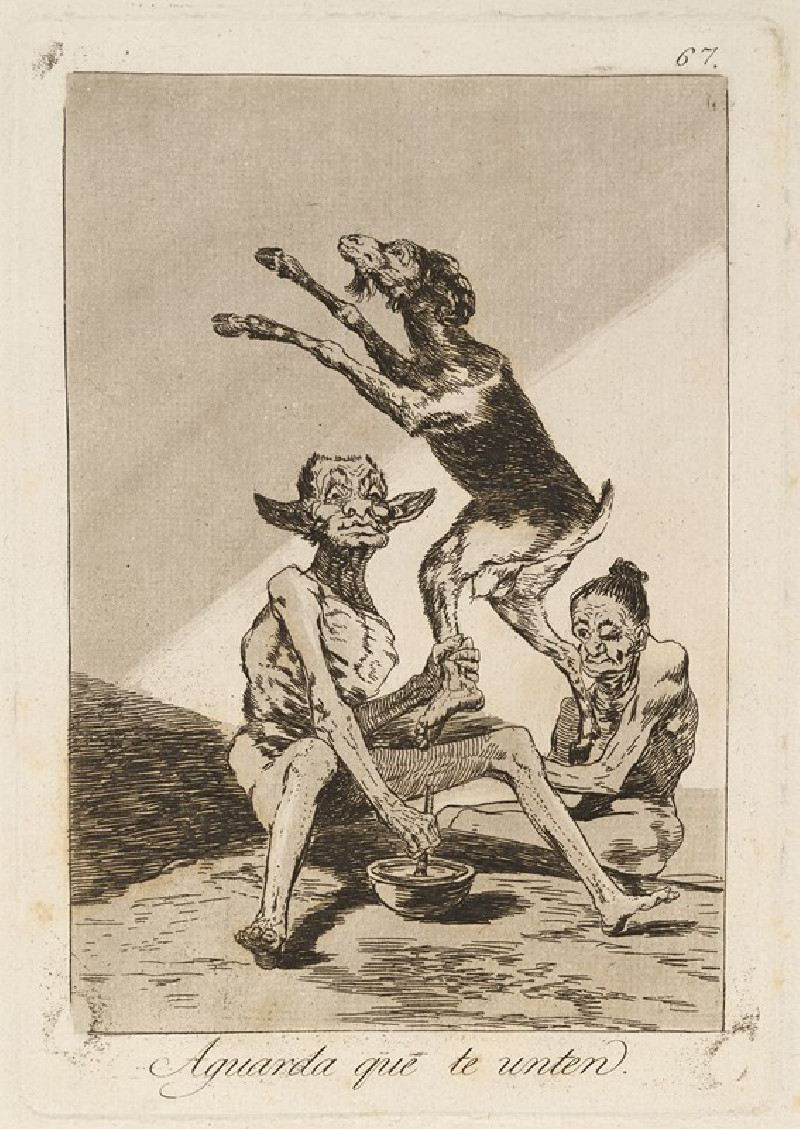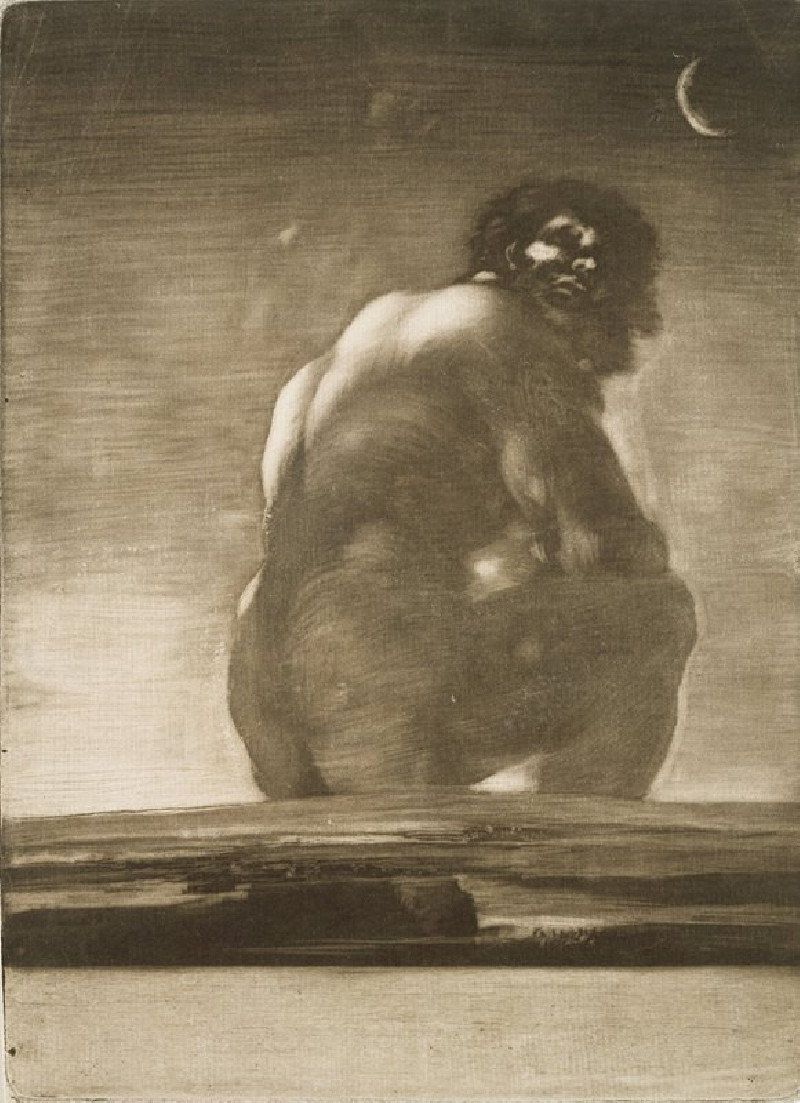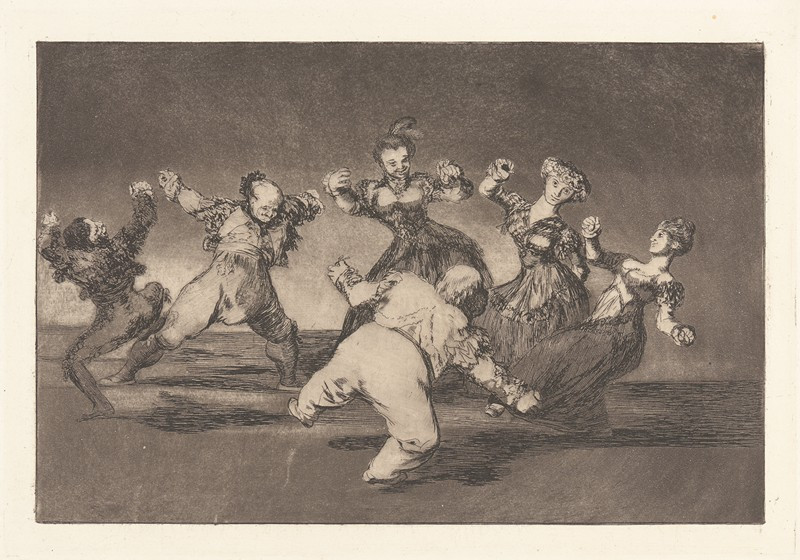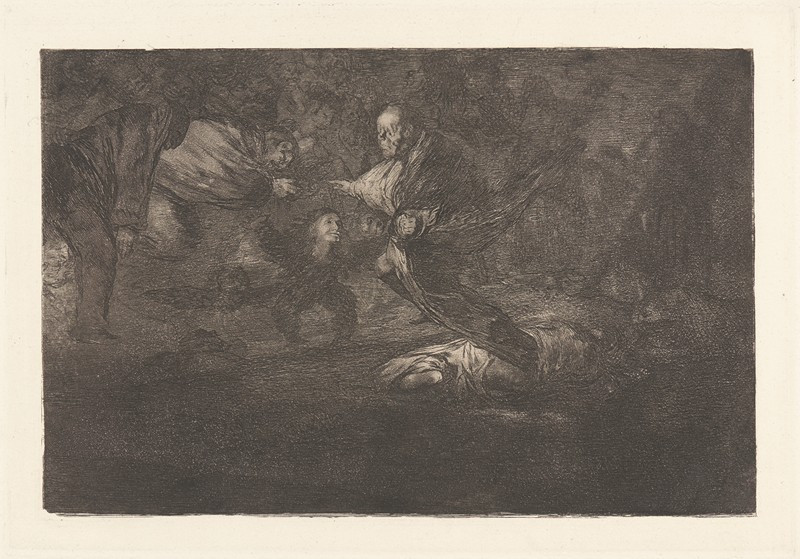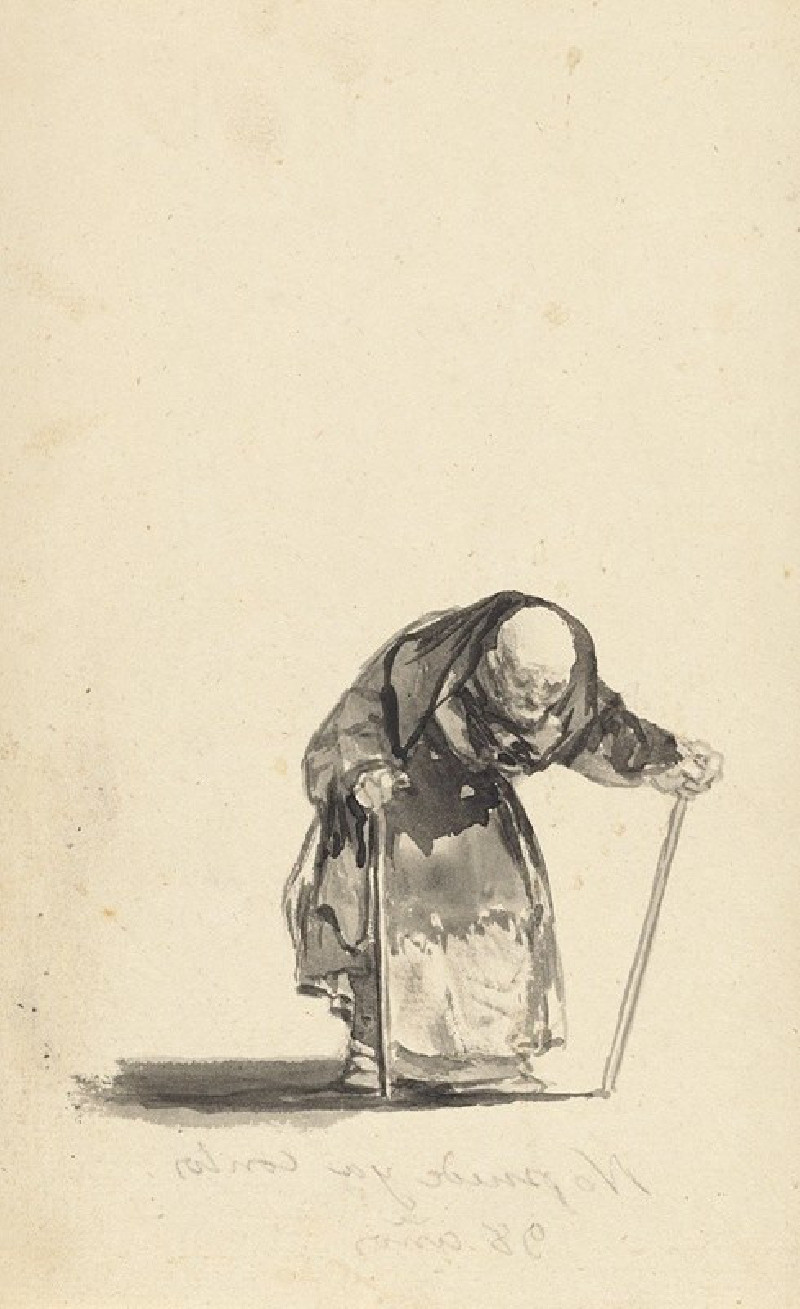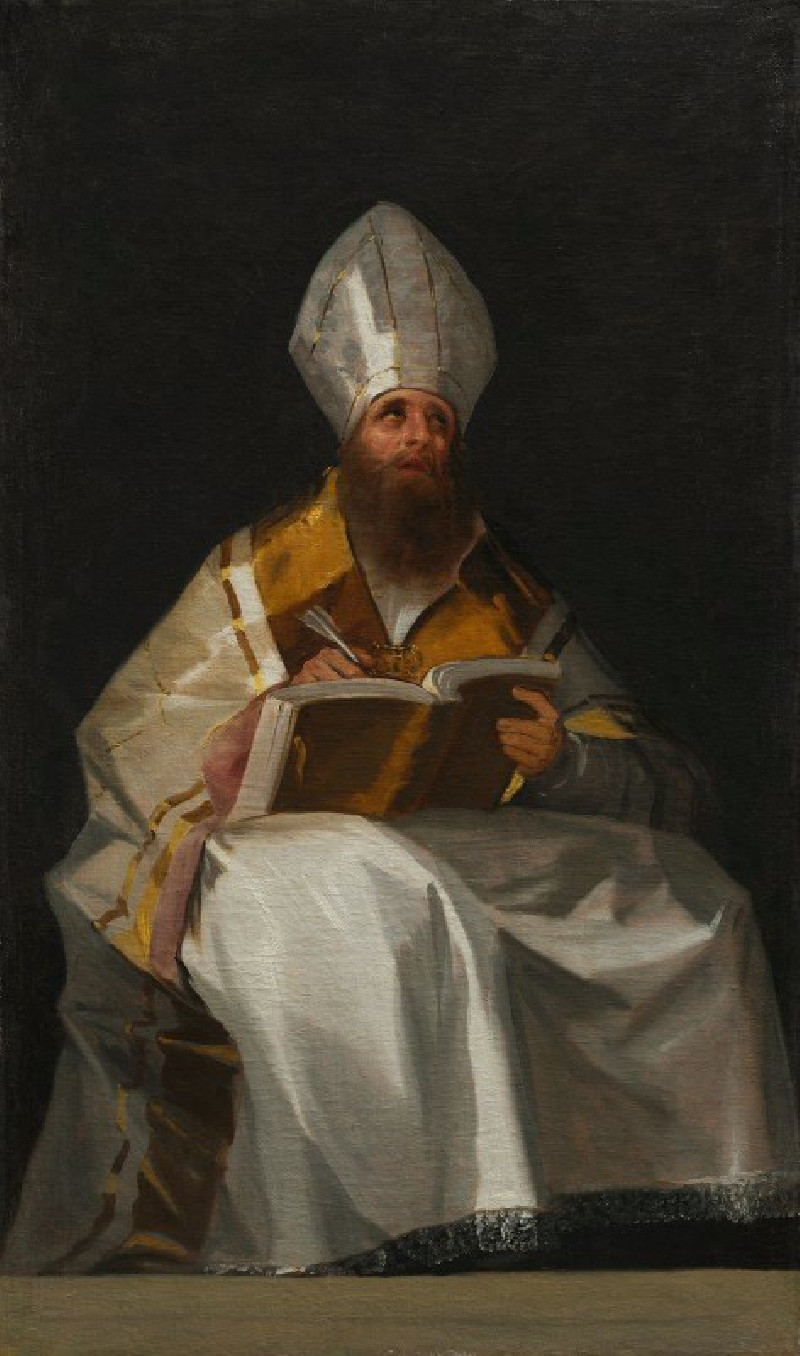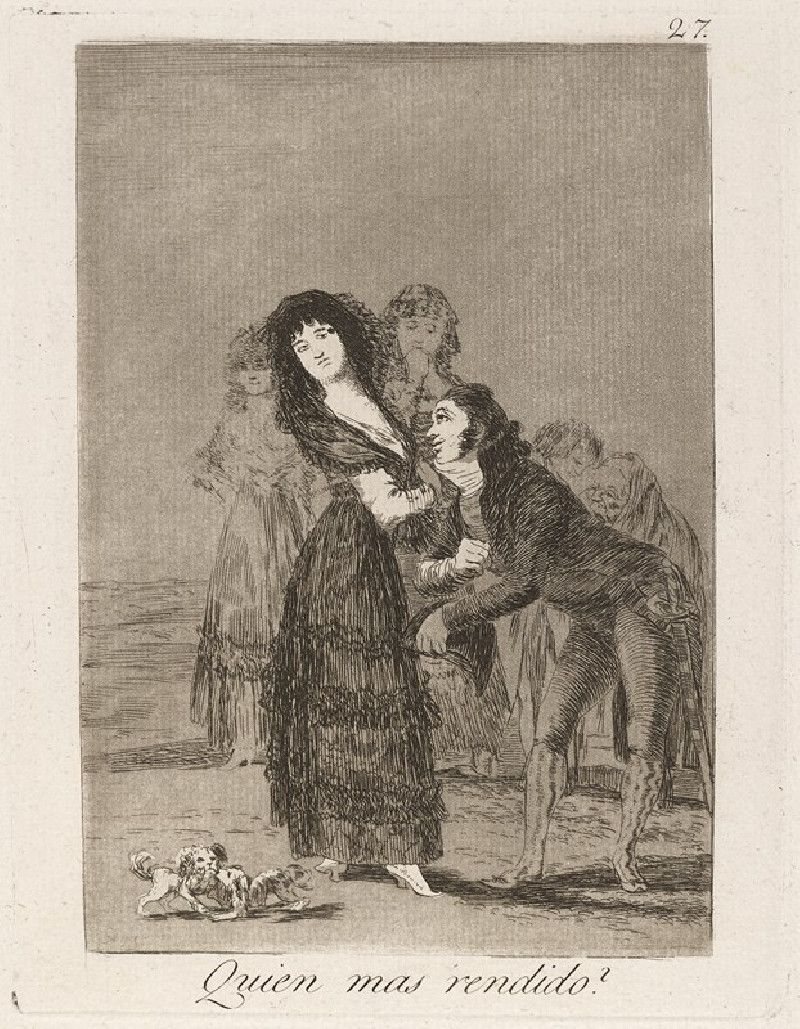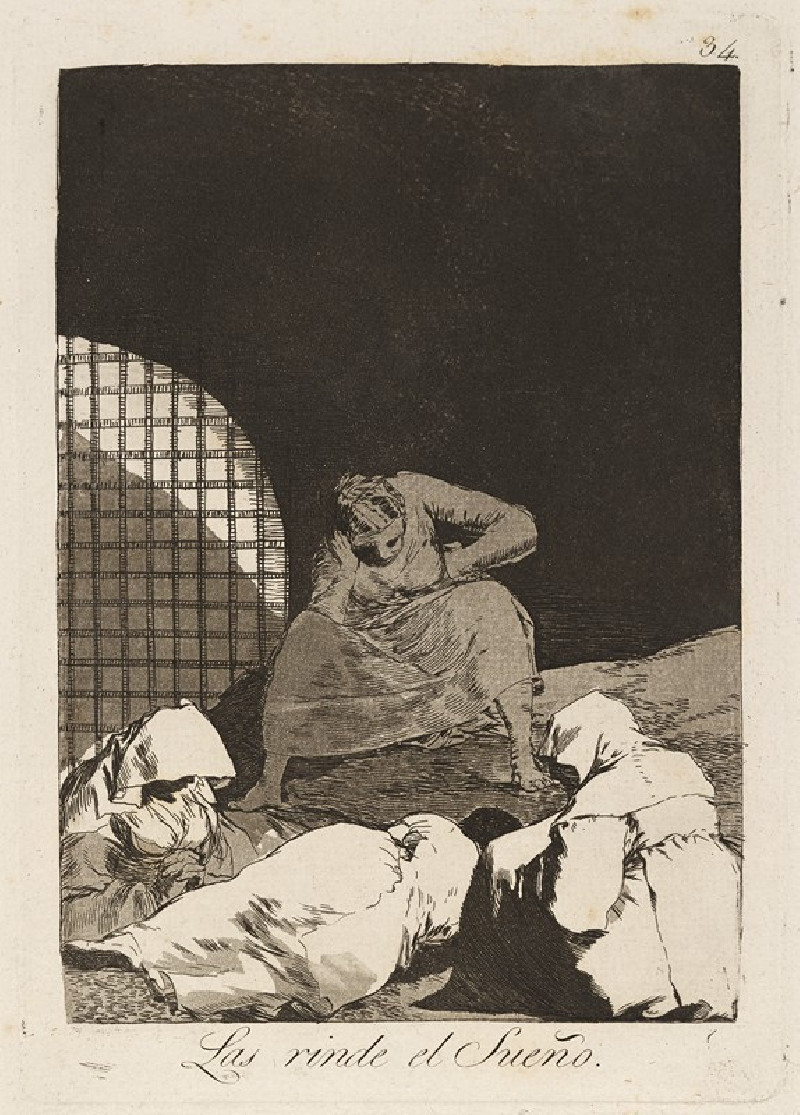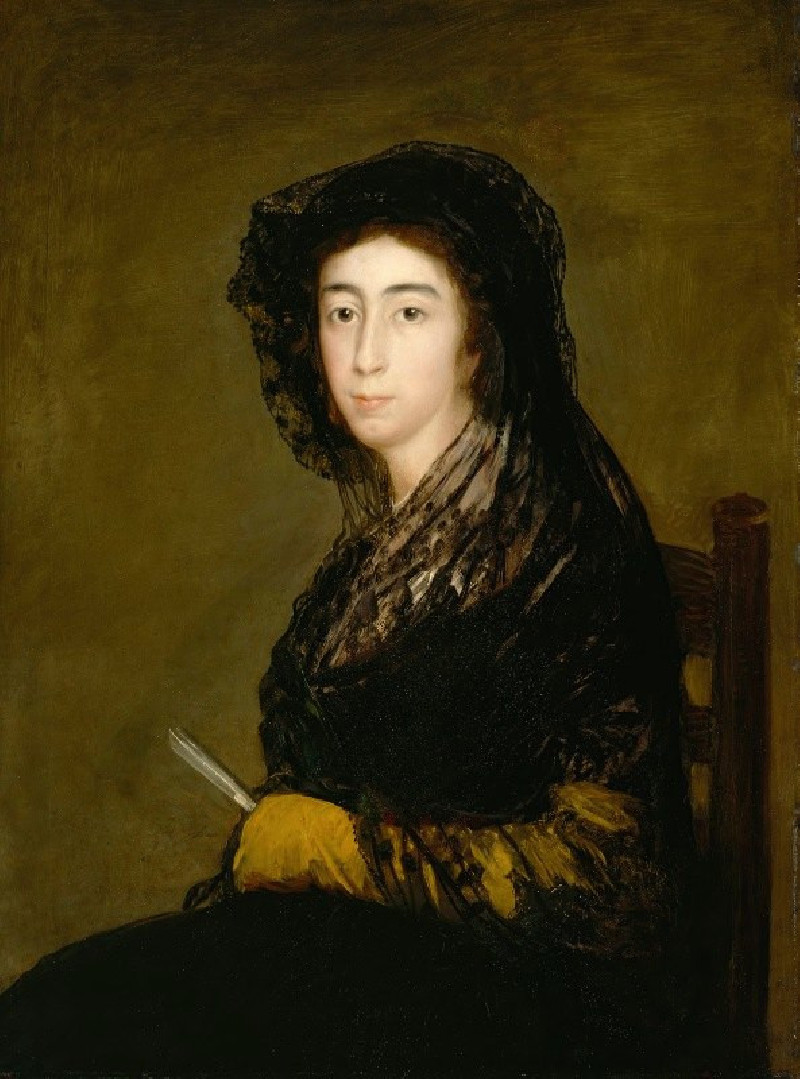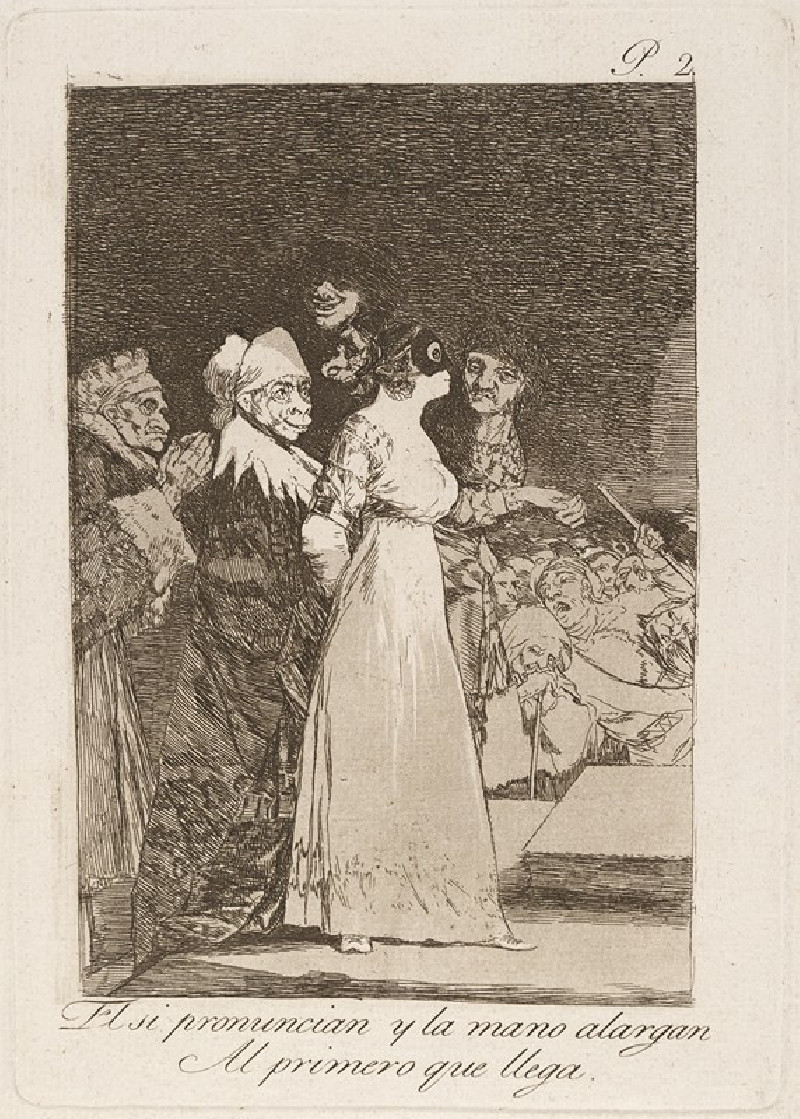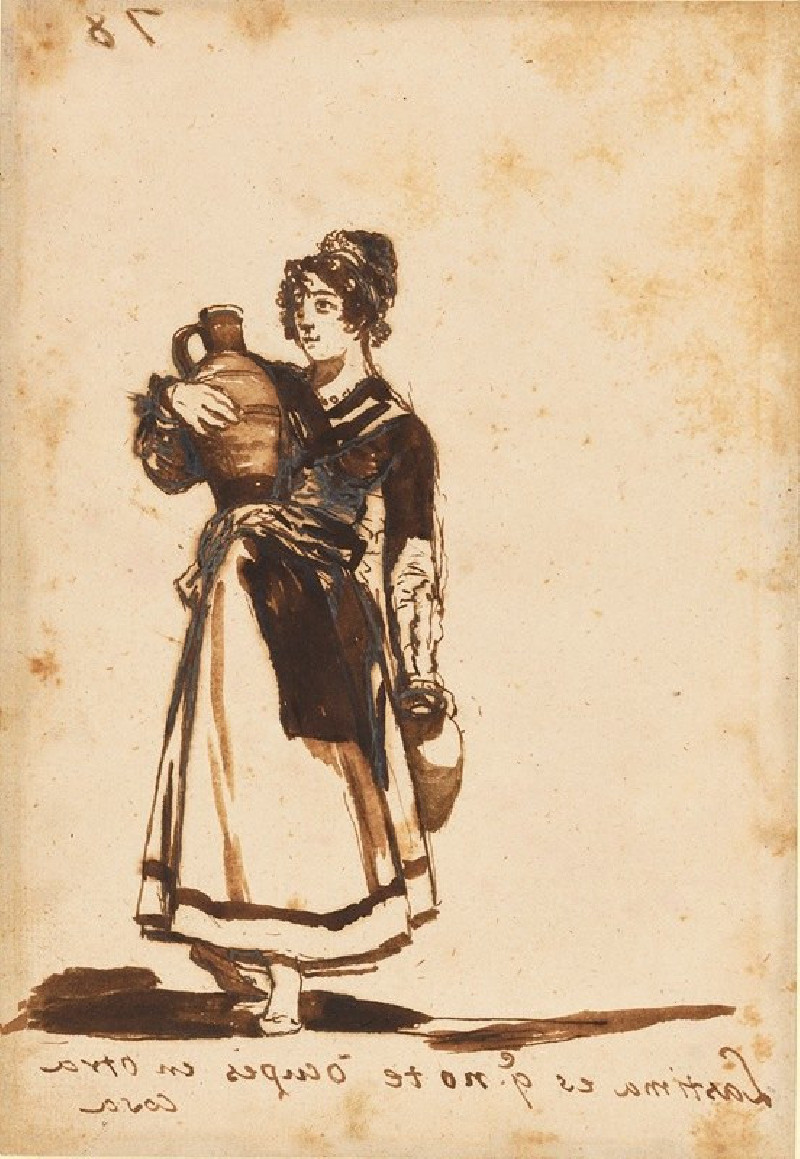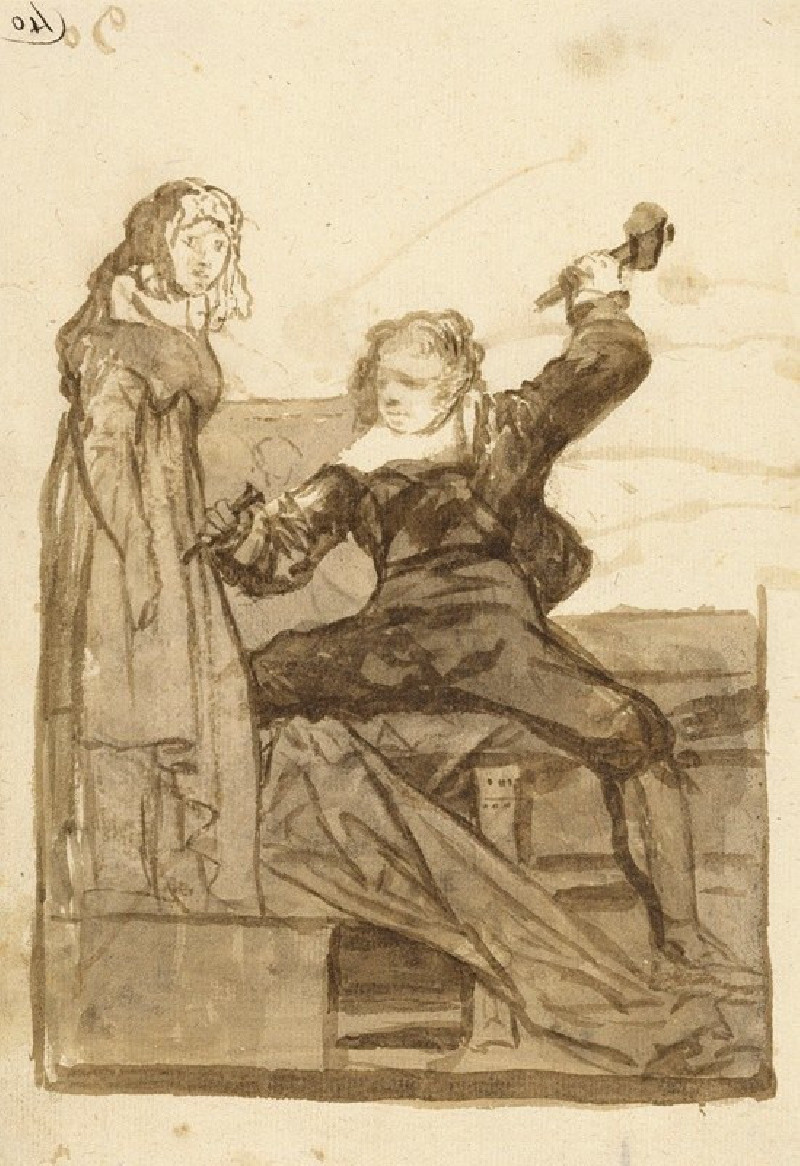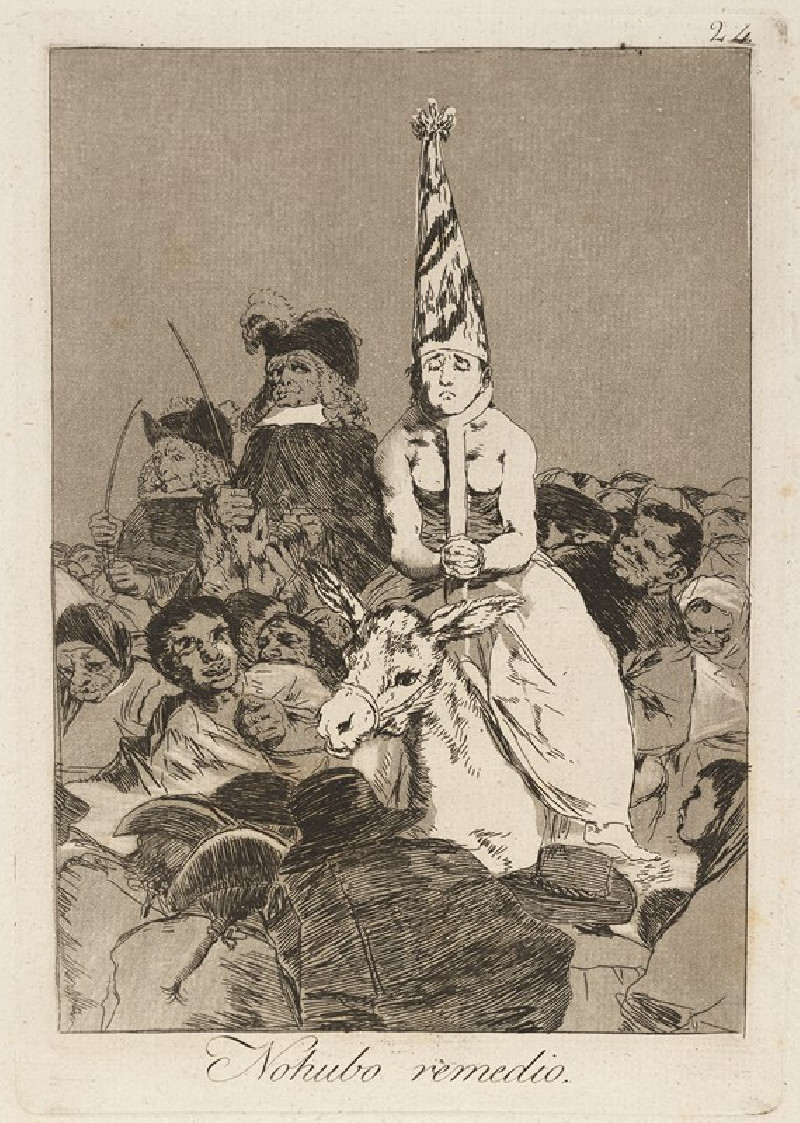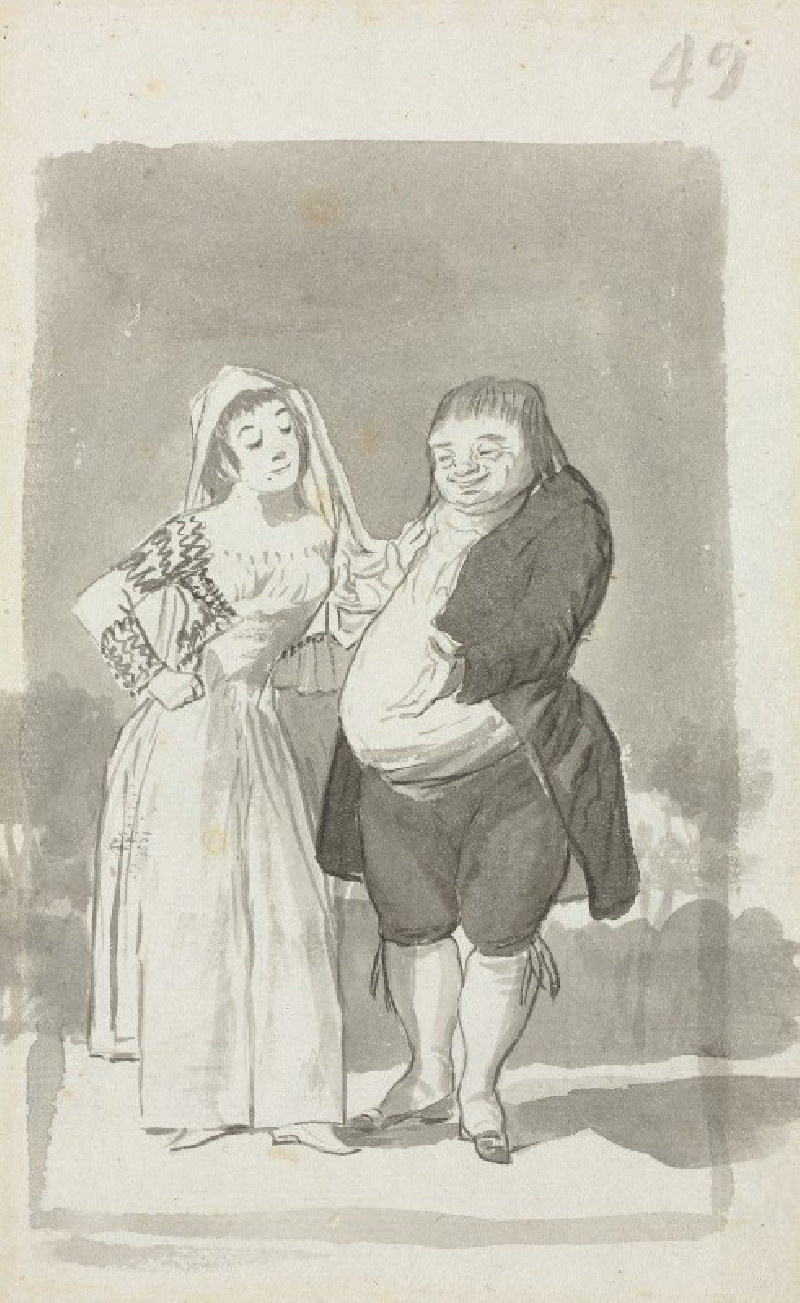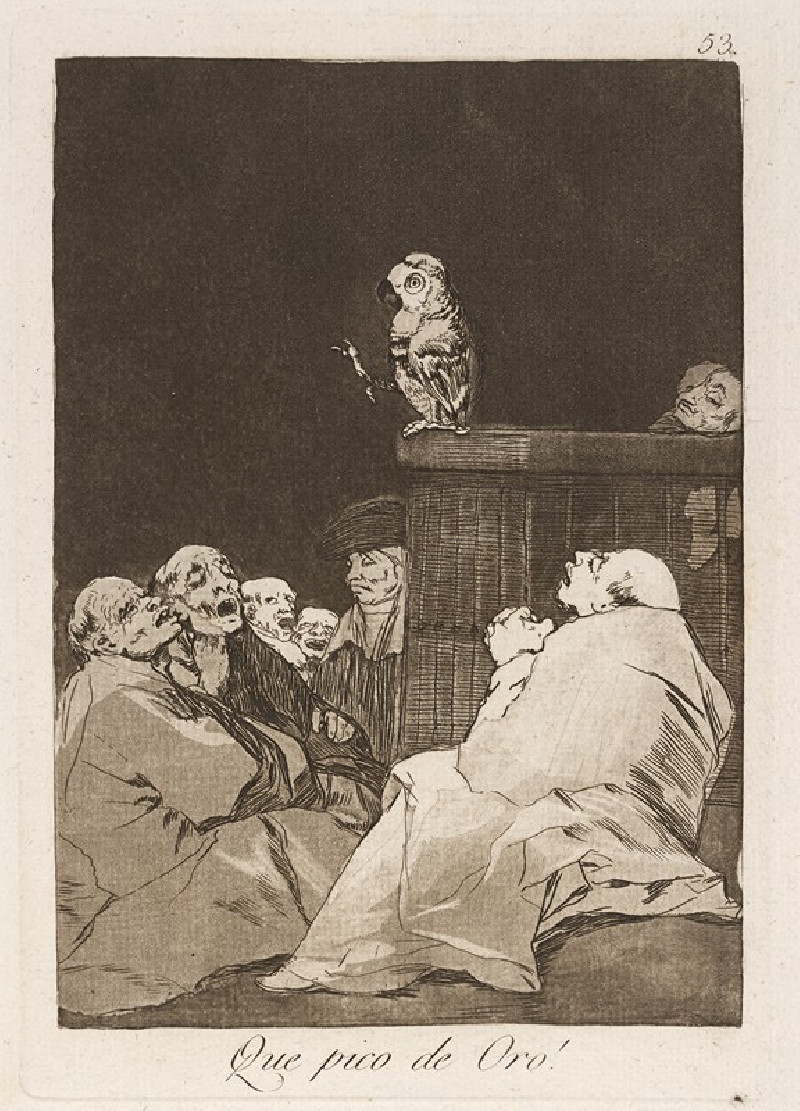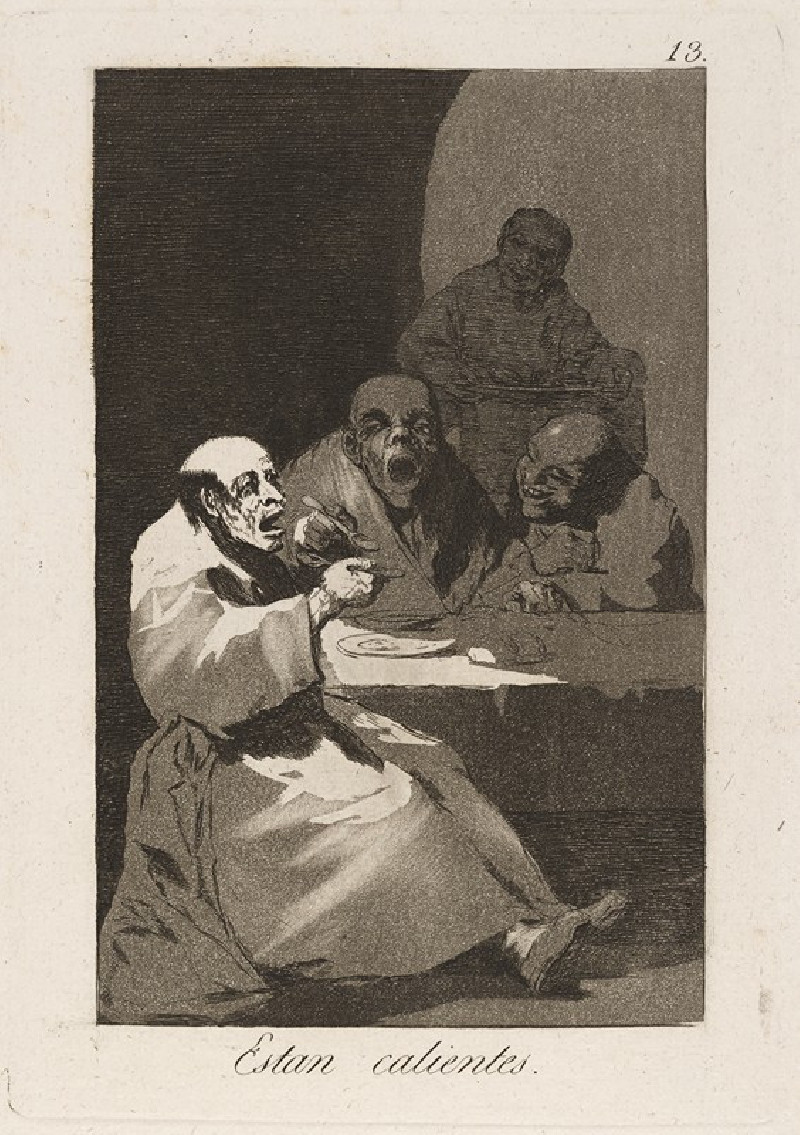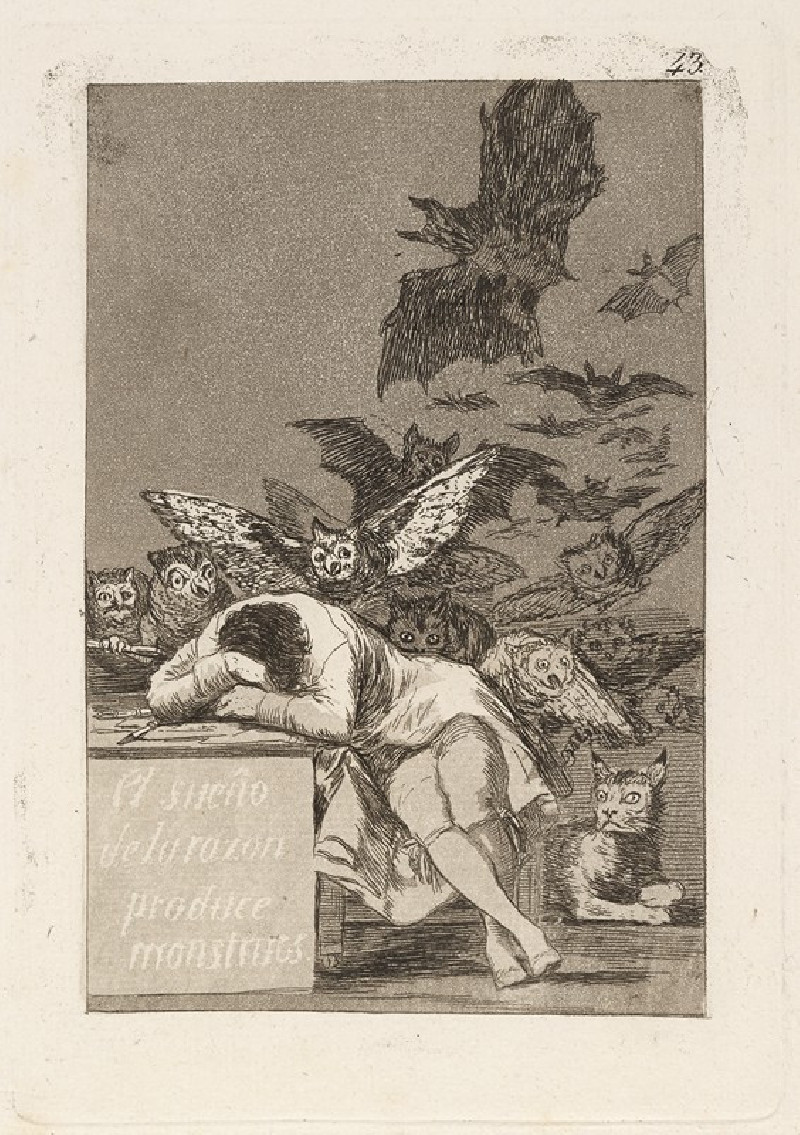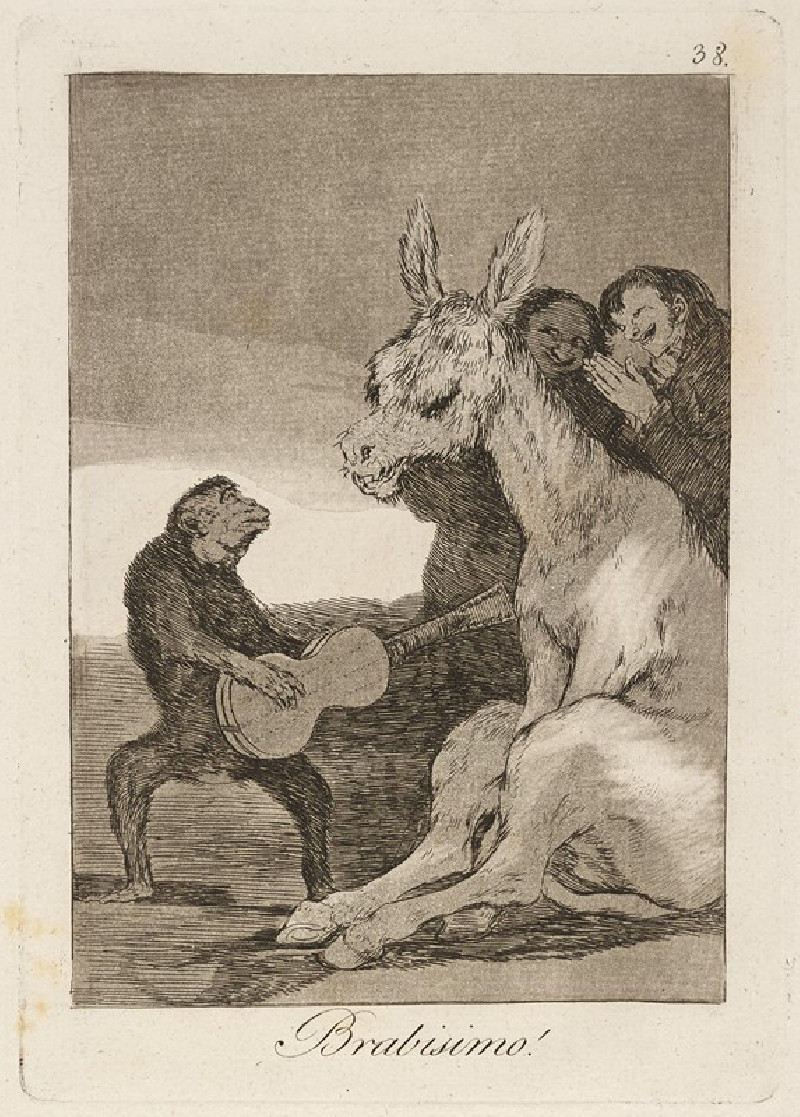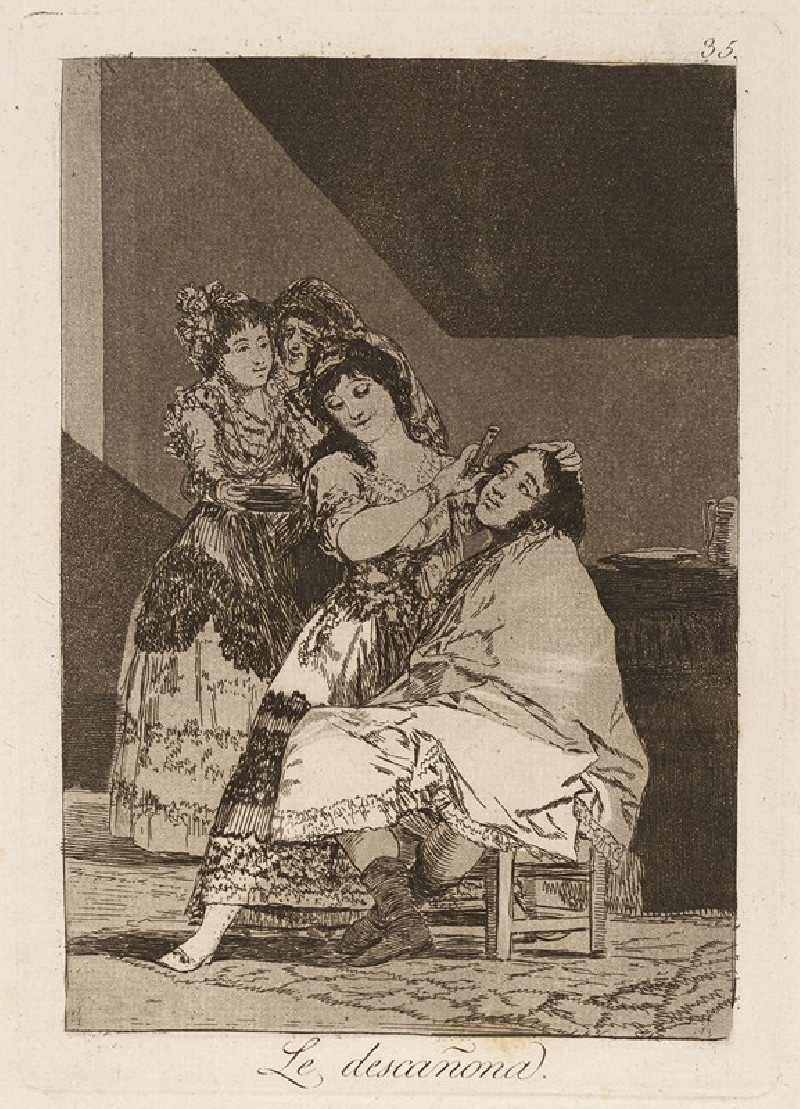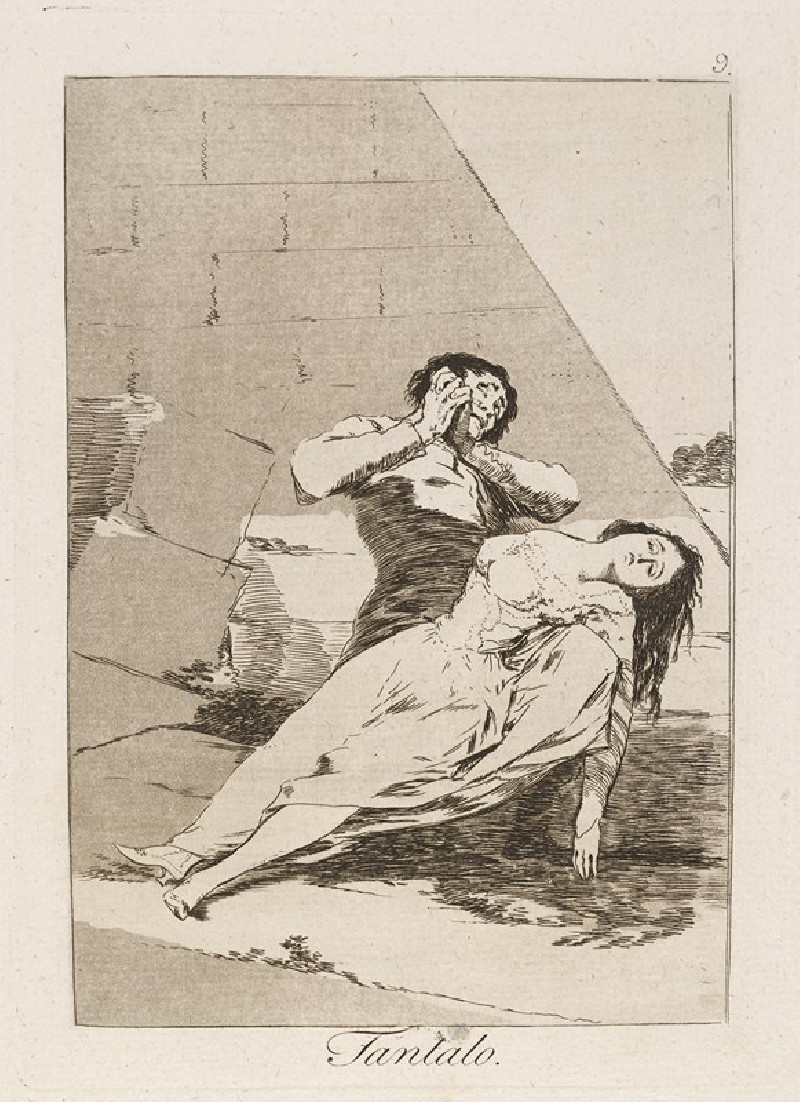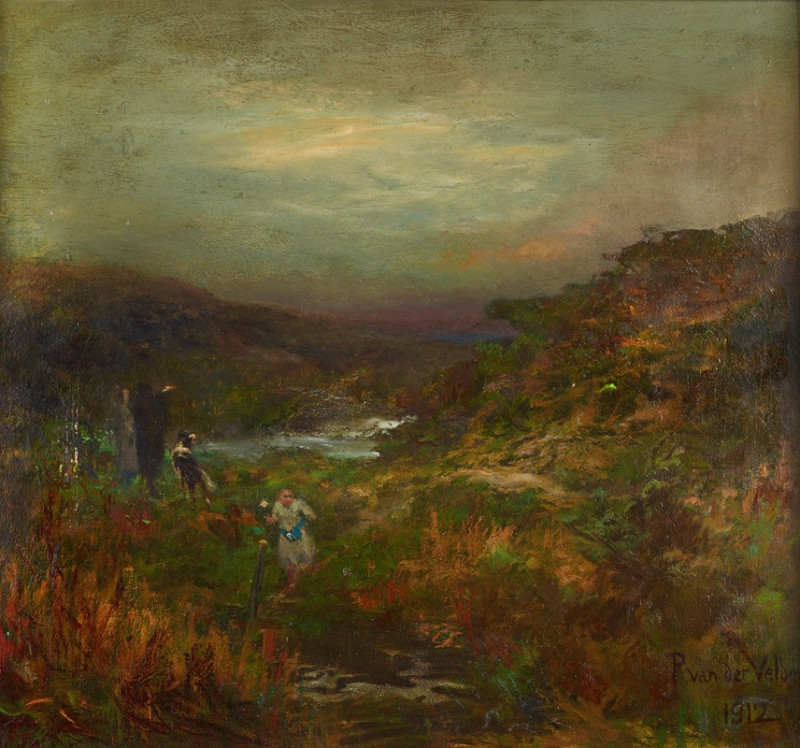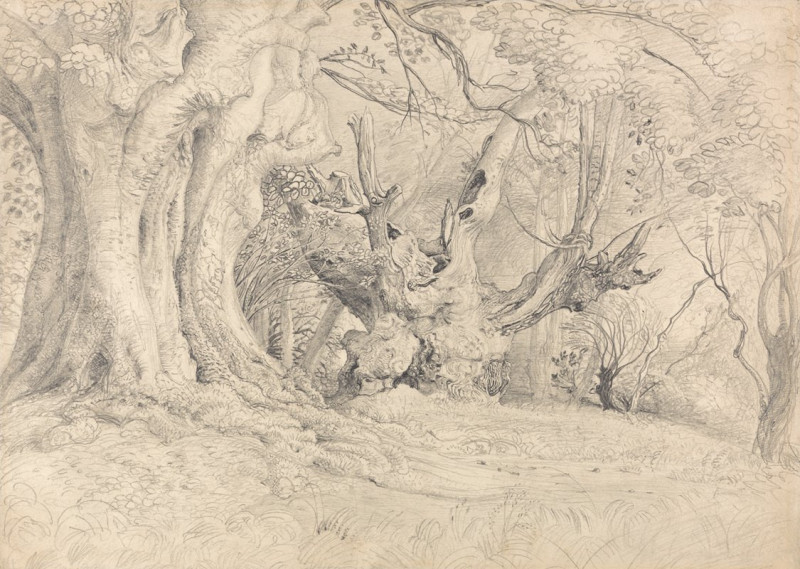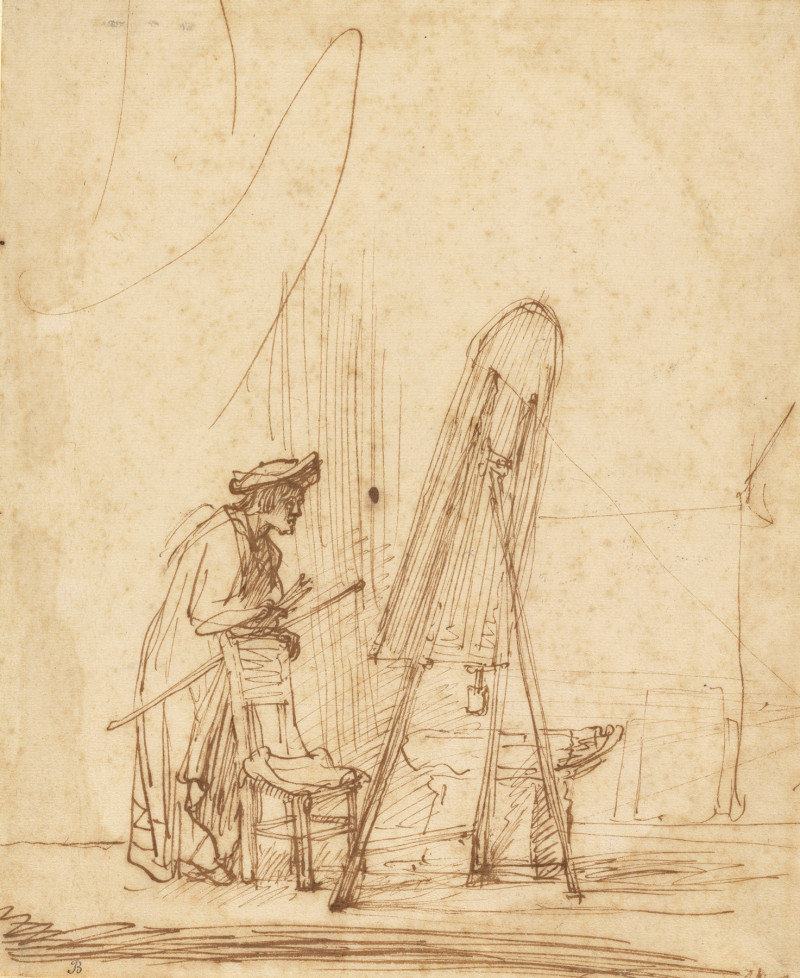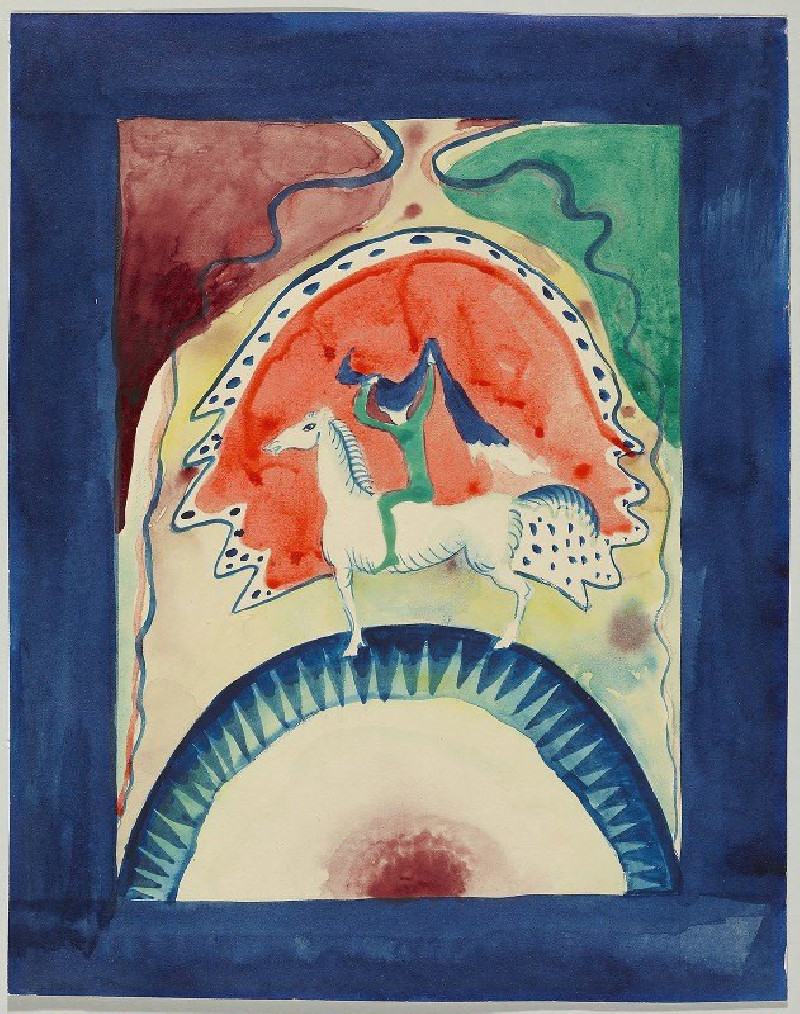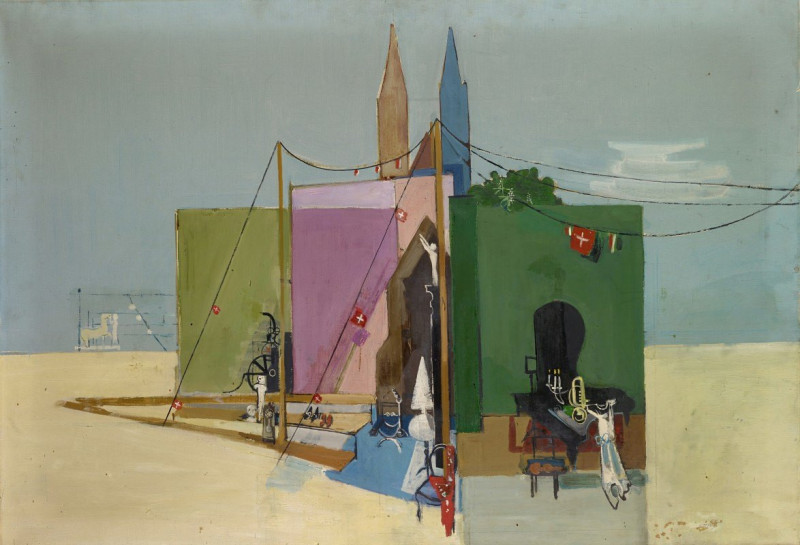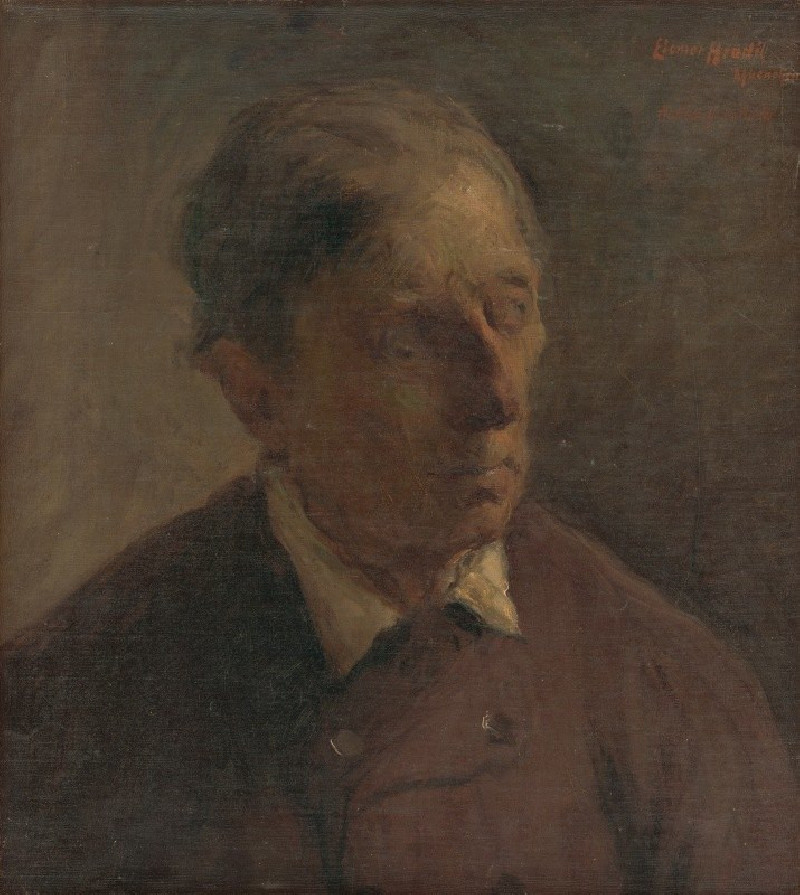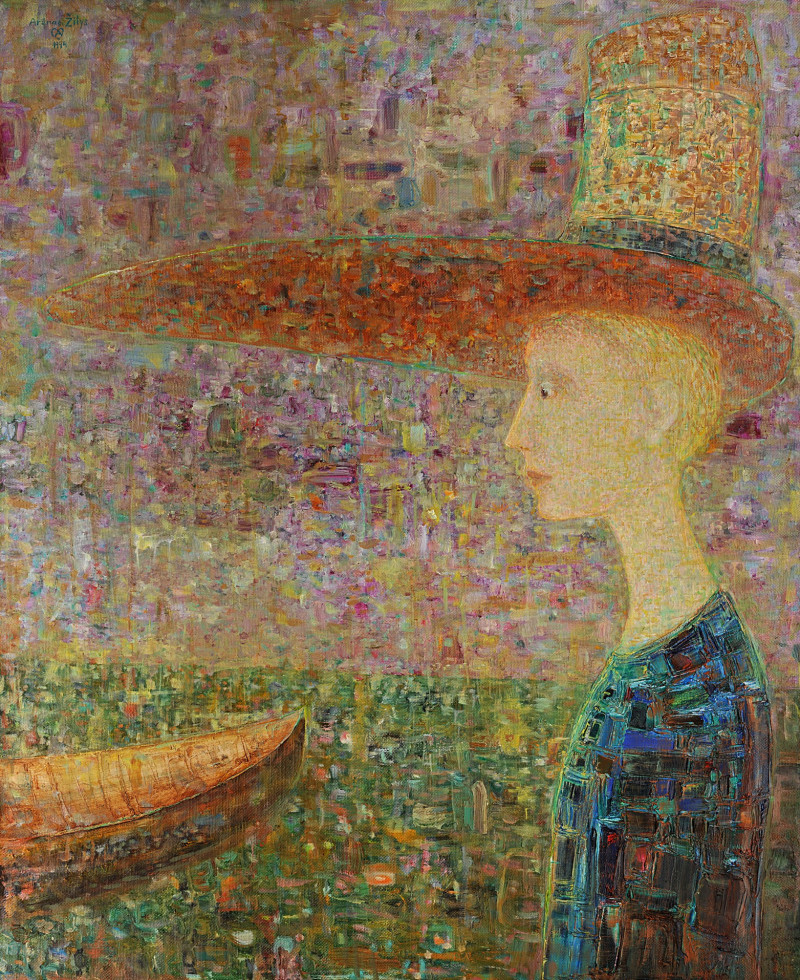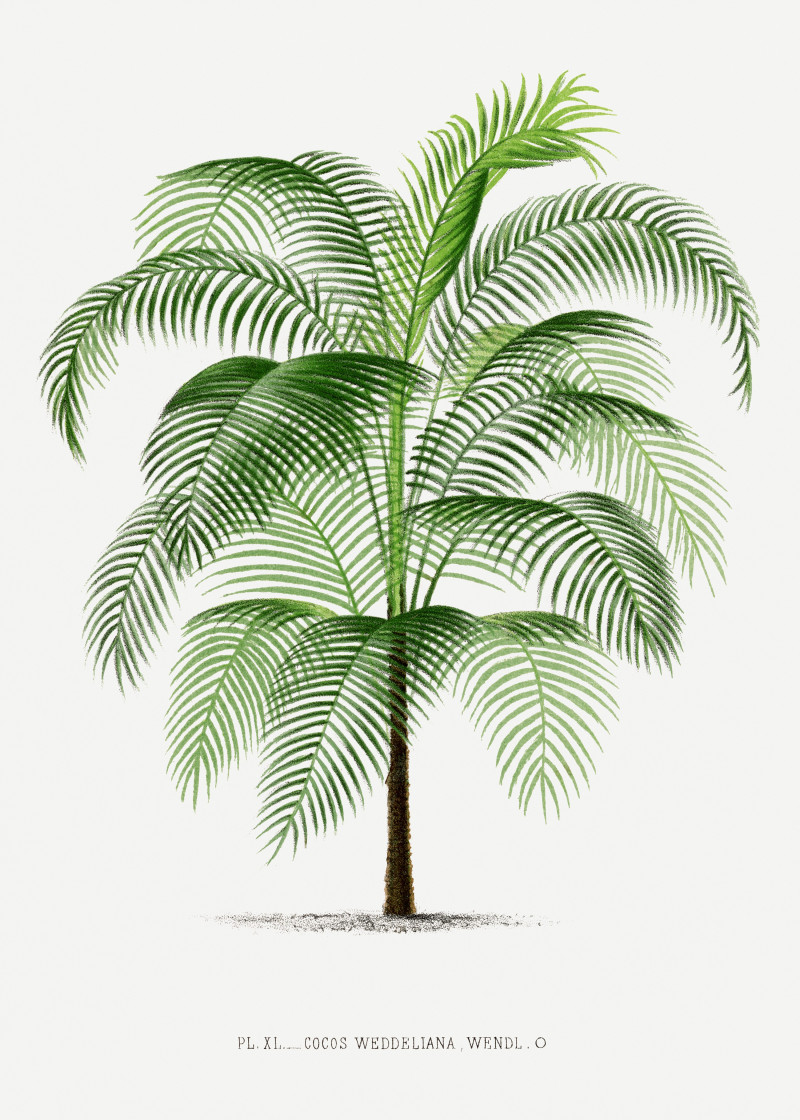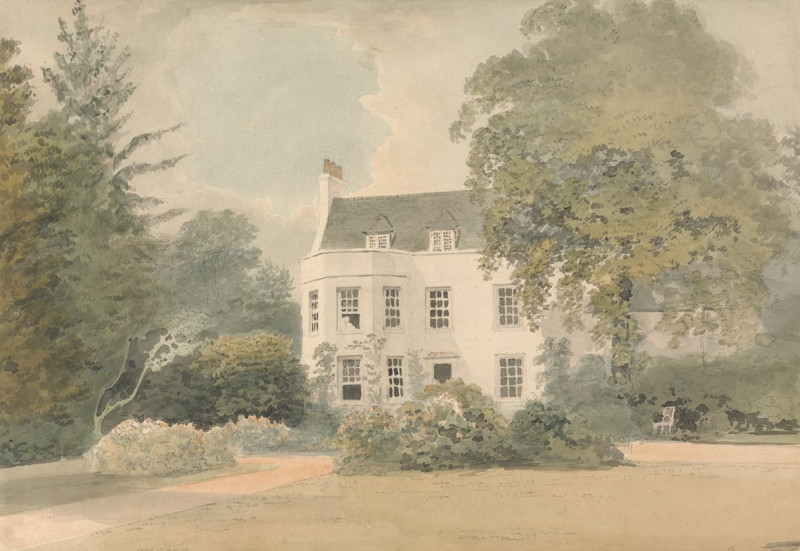Aguarda que te unten. (Wait till you’ve been anointed.) (1796-1797)
Technique: Giclée quality print
Recommended by our customers
More about this artwork
Francisco de Goya's "Aguarda que te unten" (Wait till you’ve been anointed, 1796-1797) offers an unsettling yet captivating glimpse into the celebrated artist's exploration of the human condition and societal critiques. This etching, part of Goya's famous series known as "Los Caprichos," depicts a bizarre and somewhat unsettling scene where human folly and supernatural elements blend into a dreamlike tableau.In the artwork, two peculiar characters, one sporting a goat-like mask and the other a severe, almost ghoulish expression, seem engaged in a ritualistic act. They accompany a leaping dog that stretches dynamically towards the upper part of the frame. The goat-like figure, seated, directs an enigmatic stare toward the viewer, adding an eerie aura to the setting. The other, crouched and evidently aged, intensely concentrates on holding a bowl, perhaps containing the substance for anointment.This piece, like others in the series, is imbued with Goya’s critical eye toward the superstitions and irrational behaviors of his time. The title "Wait till you've been anointed" suggests a moment of anticipated transformation or empowerment, albeit under obscure and possibly dubious circumstances. Goya’s use of sharp, expressive lines and contrasting dark tones amplifies the sense of an almost theatrical spectacle that borders the grotesque and the absurd.Ultimately, Goya’s work challenges the viewer to reflect on the darker sides of human nature and societal norms, making "Aguarda que te unten" a profound piece for contemplation and discussion.
Delivery
Returns
Francisco José de Goya y Lucientes (30 March 1746 – 16 April 1828) was a Spanish romantic painter and printmaker. He is considered the most important Spanish artist of the late 18th and early 19th centuries. His paintings, drawings, and engravings reflected contemporary historical upheavals and influenced important 19th- and 20th-century painters. Goya is often referred to as the last of the Old Masters and the first of the moderns.

